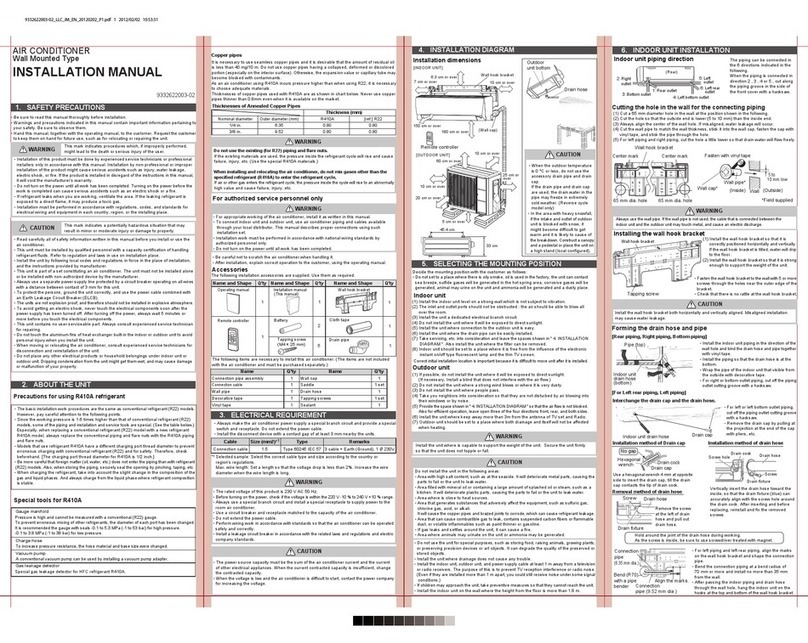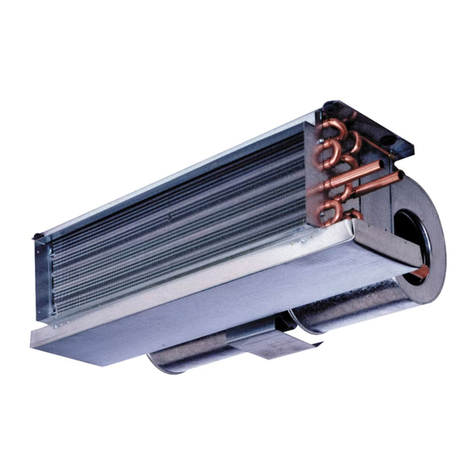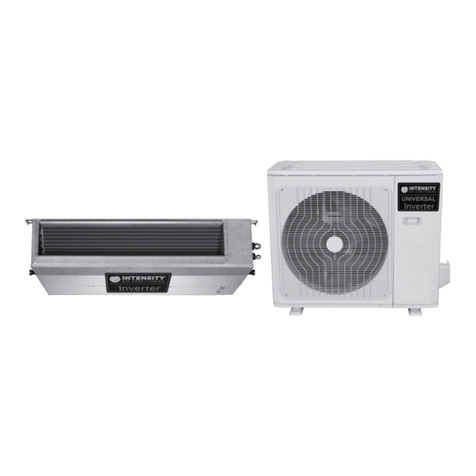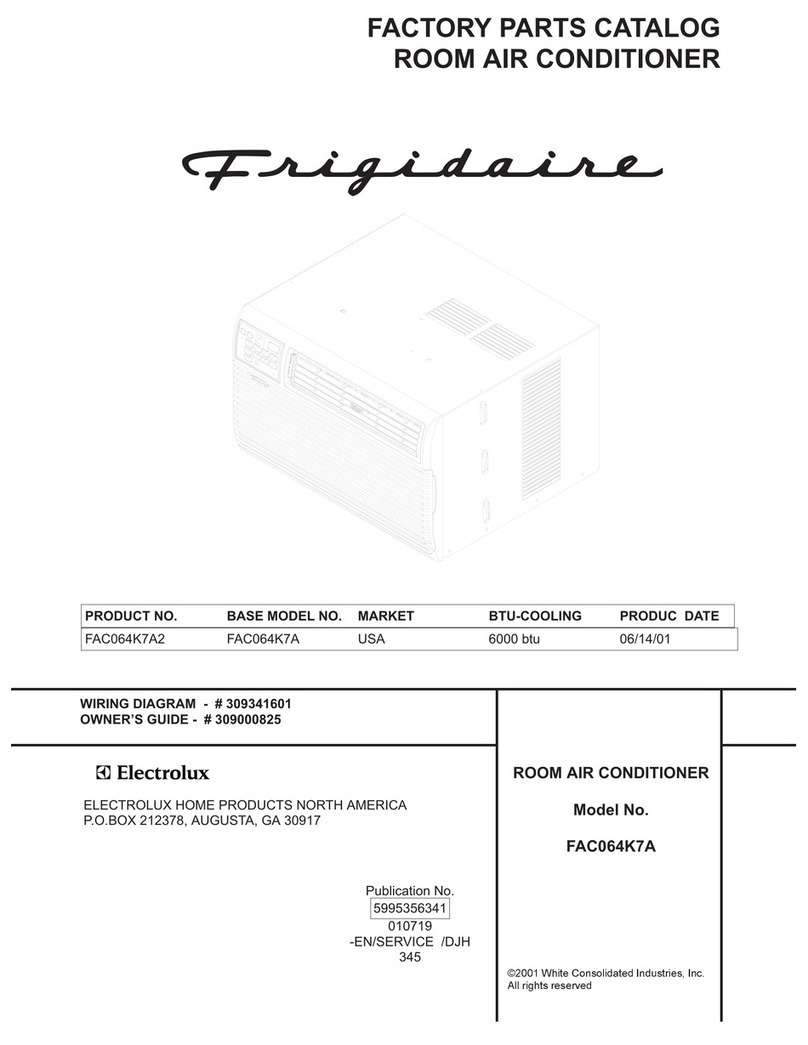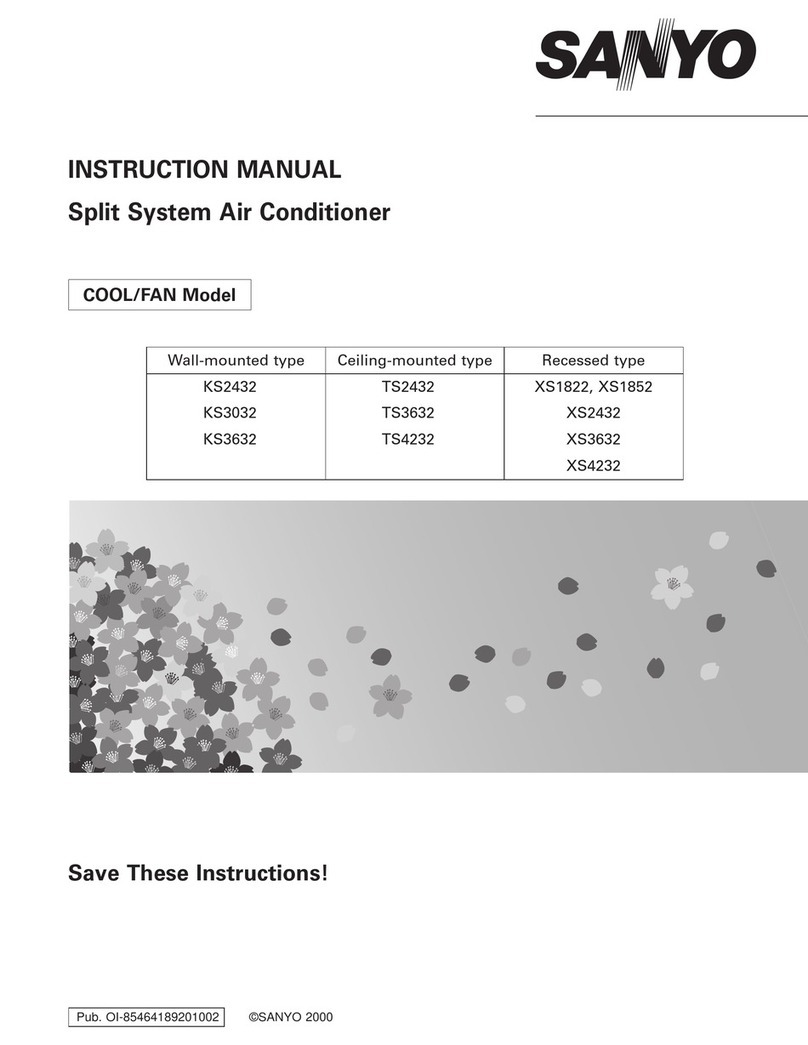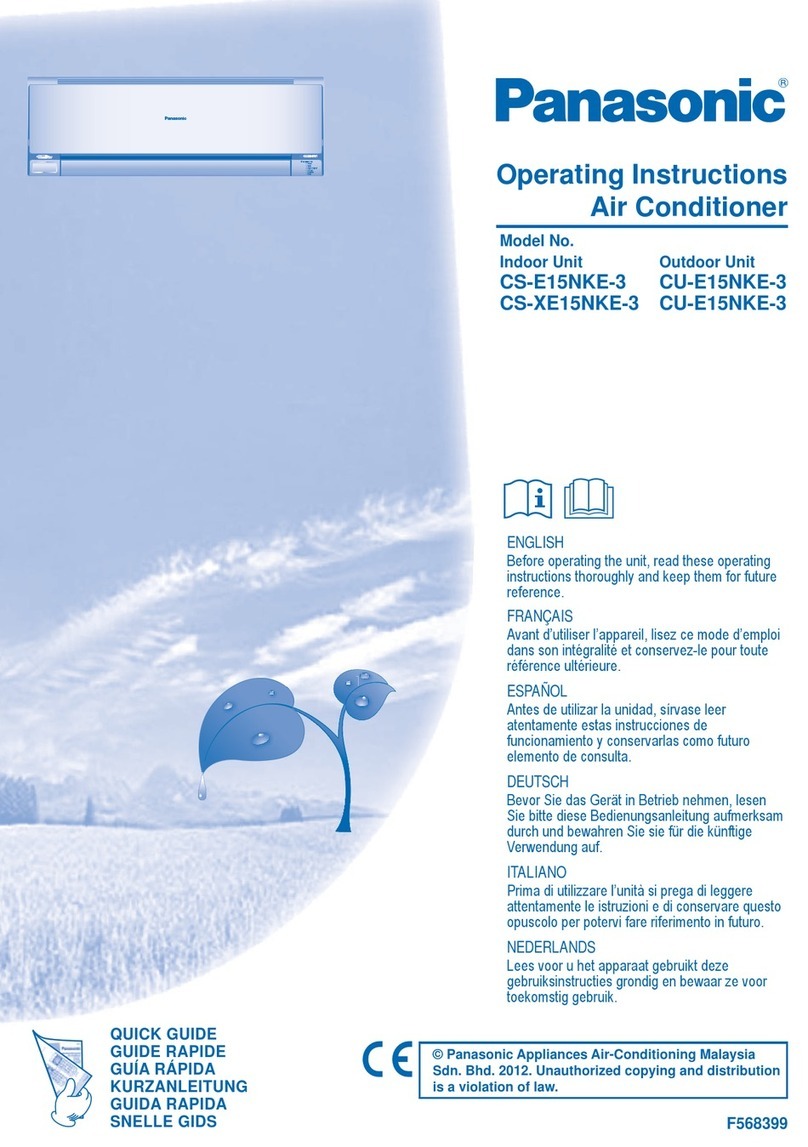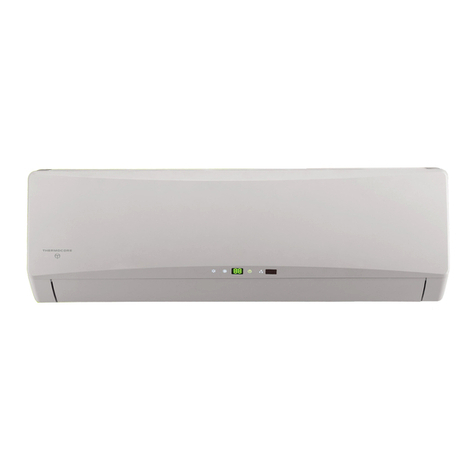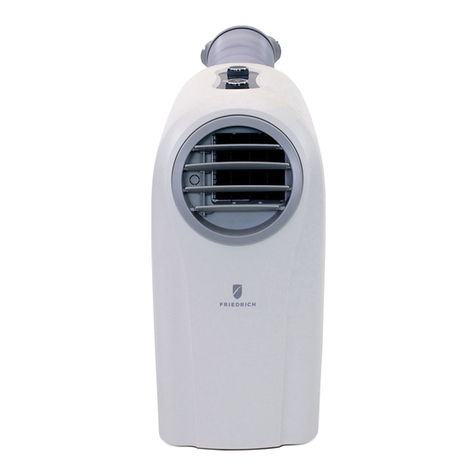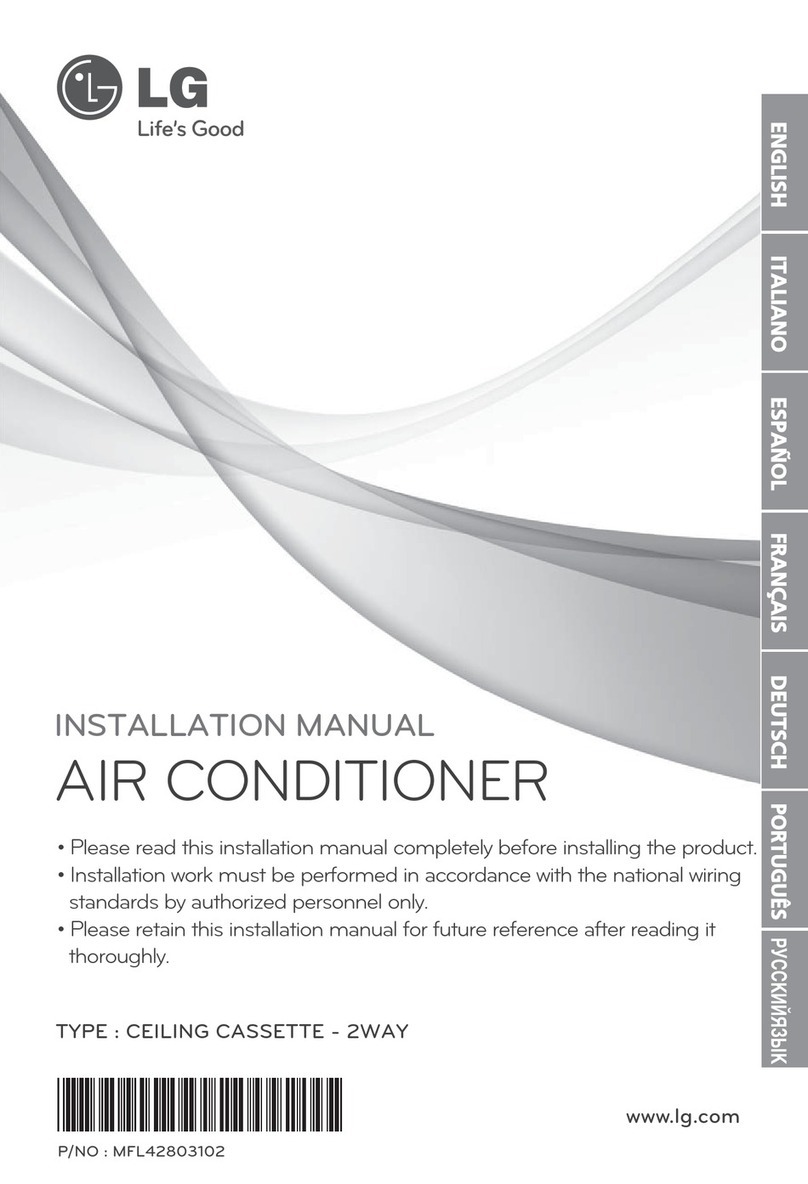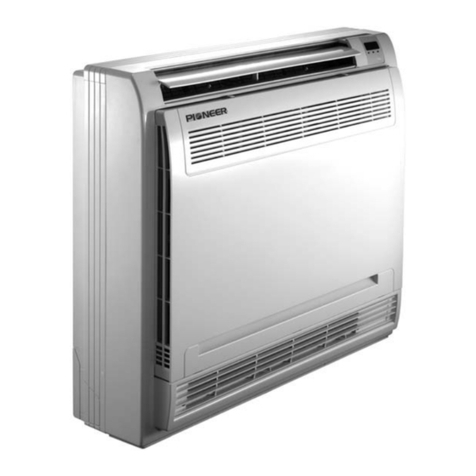
5
• The maximum refrigerant charge
amount: 140g.
•An unventilated area where the appliance
using flammable refrigerants is installed
shall be so constructed that should any
refrigerant leak, it will not stagnate so as
to create a fire or explosion hazard.
• The appliance shall be stored so as
to prevent mechanical damage from
occurring.
• Check that cabling will not be subject
to wear, corrosion, excessive pressure,
vibration, sharp edges or any other
adverse environmental effects. The
check shall also take into account the
effects of aging or continual vibration
from sources such as compressors or
fans.
• The following leak detection methods
are deemed acceptable for systems
containing flammable refrigerants.
• Electronic leak detectors shall be used
to detect flammable refrigerants, but
the sensitivity may not be adequate,
or may need re-calibration. (Detection
equipment shall be calibrated in a
refrigerant-free area.) Ensure that the
detector is not a potential source of
ignition and is suitable for the refrigerant
used.
• Leak detection equipment shall be
set at a percentage of the LFL of the
refrigerant and shall be calibrated
to the refrigerant employed and the
appropriate percentage of gas (25 %
maximum) is confirmed.
• Leak detection fluids are suitable for use
with most refrigerants but the use of
detergents containing chlorine shall be
avoided as the chlorine may react with
the refrigerant and corrode the copper
pipe-work.
• If a leak is suspected, all naked flames
shall be removed/extinguished.
• If a leakage of refrigerant is found which
requires brazing, all of the refrigerant
shall be recovered from the system, or
isolated (by means of shut off valves) in a
part of the system remote from the leak.
• If a leakage of refrigerant is found which
requires brazing, all of the refrigerant
shall be recovered from the system, or
isolated (by means of shut off valves) in a
part of the system remote from the leak.
• Oxygen free nitrogen (OFN) shall then be
purged through the system both before
and during the brazing process.
• Before carrying out this procedure,
it is essential that the technician is
completely familiar with the equipment
and all its detail. It is recommended
good practice that all refrigerants are
recovered safely. Prior to the task being
carried out, an oil and refrigerant sample
shall be taken in case analysis is required
prior to re-use of reclaimed refrigerant.
It is essential that electrical power is
available before the task is commenced.
• Become familiar with the equipment and
its operation.
• Isolate system electrically.
• Before attempting the procedure ensure
that:
- mechanical handling equipment
is available, if required, for handling
refrigerant cylinders.
- all personal protective equipment is
available and being used correctly.
- the recovery process is supervised at all
times by a competent person.
- recovery equipment and cylinders
conform to the appropriate standards.
